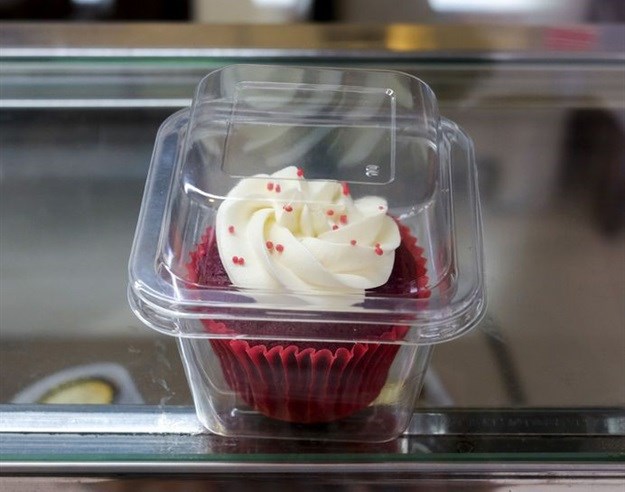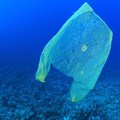
Why can't all plastic waste be recycled?
The UK produced 11-million tonnes of plastic waste in 2017, and recycled around two thirds of it. Or so it seemed. A report by the National Audit Office (NAO) shows that over half of the UK's recyclable waste is sent overseas for recycling, but much of it is likely to end up in landfill or the ocean instead.

© peerajit Ditta-in – 123RF.com
The recycling regime is a mess in the UK - but what’s stopping Britain from making all of its plastic waste recyclable and ensuring it is actually recycled?
Public engagement has played a big part in tackling plastic waste in the environment. Reaction to scenes in Blue Planet 2 where marine wildlife struggled with plastic in the ocean prompted government action. The recent ban on microbeads in cosmetics and the 5p charge for plastic bags are positive steps, but these gestures are just a start.
Supermarkets have promised in a “Plastic Pact” to eliminate avoidable packaging and ensure all of it can be reused, recycled or composted by 2025. One third of supermarket plastic cannot easily be recycled at present, and while the pact among retailers is only voluntary, its target is welcome. That said, just because a plastic is recyclable does not guarantee that it will be recycled. Local kerbside collections vary from place to place and many authorities only accept limited types.

© Warut_Chinsai – 123RF.com
The barriers to recycling plastic waste
There is a huge range of different types of plastic used in disposable products and packaging. One solution is to limit the types of plastic to a single standard which is easy to recycle. This might mean fewer coloured plastics. Black food trays are a particularly troublesome example as they contain pigments that make packaging harder to detect by sorting technology.
Mixed materials are those that have different types of material in the same product. For instance, a plastic bag with a foil lining or a disposable coffee cup made of paper with a plastic lining. These are especially difficult and expensive to separate. They are considered in many cases contaminated and worthless.

Image source: www.pexels.com
Designing packaging so that it’s easier to separate is vital. Some consultancies offer advice to companies on how to achieve this, for instance, by having outer layers that are removable by the consumer and using water-soluble glues. This design-for-disposal approach would mean that food-grade plastic streams – materials which are safe to use in direct contact with food – are easier to identify and separate, increasing their availability and making them worth more as a material to put back into the cycle.
The raw feedstocks for most plastics are fossil fuels, which are cheaper to use than recycled material. Plant-based feedstocks are a good lower-carbon alternative but are often in competition with crops used to produce energy or food and are not always as sustainable as they might appear. This is where government intervention can have a big impact. A levy on making new single-use plastic rather than using recycled material would create a level playing field and raise funds to subsidise the development of new, cleaner materials.
A plastic-free future?
Could we just get rid of all plastic packaging? Sadly, no. Some of it is considered unavoidable. Plastic prolongs the life of produce. It provides a barrier to bacteria, a film to lock in protective gas and a convenient waterproof layer. It would be difficult to imagine buying products like raw fish without it.
But there are solutions – consumers can take their own reusable containers to shops, and retailers can use more recycled (and recyclable) materials. 2025 is a long way off when plastics are in food chains now. Eliminating single-use materials is possible but it’s going to involve us all in the solution.
![]() Businesses are talking about the issue but the public could be forgiven for impatience over the lack of choice and commitment. They need to innovate. The government, meanwhile, has made some positive changes but these have been easy wins so far. They need to provide funding and legislation which supports alternatives to single-use plastics. Consumers also need to be prepared for a little inconvenience. Plastics are not a disposable commodity, they last hundreds of years in our environment and until now their true lifecycle cost has not been reflected in the price at the till.
Businesses are talking about the issue but the public could be forgiven for impatience over the lack of choice and commitment. They need to innovate. The government, meanwhile, has made some positive changes but these have been easy wins so far. They need to provide funding and legislation which supports alternatives to single-use plastics. Consumers also need to be prepared for a little inconvenience. Plastics are not a disposable commodity, they last hundreds of years in our environment and until now their true lifecycle cost has not been reflected in the price at the till.
This article was originally published on The Conversation. Read the original article.
Source: The Conversation Africa

The Conversation Africa is an independent source of news and views from the academic and research community. Its aim is to promote better understanding of current affairs and complex issues, and allow for a better quality of public discourse and conversation.
Go to: https://theconversation.com/africaAbout Sharon George
Sharon George, lecturer in environmental science, Keele UniversityRelated
Nigeria is the world’s 2nd biggest plastic polluter: expert insights into the crisis 13 Sep 2024 How much worse are coloured plastics for the environment? 9 Sep 2024 Nigeria to ban single-use plastics next year 26 Jun 2024 Canon joins war on plastic waste with new sorting machine to enhance recycling 26 Jun 2024 Igus harnesses circular economy for new plain bearing 6 Dec 2023 CSIR work against plastic pollution honoured by UNEP's Champions of the Earth 16 Nov 2023









